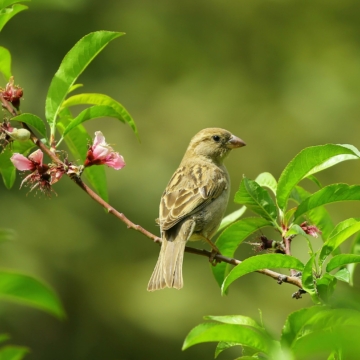
Wakefield planning: how new Biodiversity Net Gain affects your development
Wakefield planning applications from developers will include a new mandatory condition from this month.
Let’s take an in-depth look at Biodiversity Net Gain, what it means for developments and our team of Leeds architects.
What is Biodiversity Net Gain?
Biodiversity Net Gain, or BNG, is a new planning rule and approach to development.
It applies in England under Schedule 7 of the Town and Country Planning Act 1990.
The aim of BNG is to improve and extend habitats for wildlife around new developments.
Concerns have been raised about biodiversity depletion, both in the UK and globally, for years.
An additional benefit for society is that providing more high-quality natural spaces close to where people live or work will improve their health and wellbeing.
It is hoped this new planning condition will ensure habitats are in an enhanced condition after a development is completed, compared to how they were before it began.
Under the new rule developers, including those covered by Wakefield planning authority, must deliver a Biodiversity Net Gain of 10 per cent.
For example, if trees are removed as part of a new neighbourhood, that loss must be replaced and also boosted by the addition of more natural habitat to result in the overall increase.

Wakefield planning developers affected by BNG rules
The new rules already applied to developers of major developments.
From April 2, 2024, they also must be considered by developers on small sites.
On a national level, BNG will apply to developers of nationally significant infrastructure projects from late 2025.
Local planning authorities and land managers are also affected by the new requirement.
Any non compliance could lead to enforcement action being taken.
However home extensions, existing applications with agreed planning permission and some other types of development, are exempt.

How Biodiversity Net Gain works
First, the biodiversity value of the land developers wish to build on needs to be measured, based on its size, quality, location and type.
An element like a large pond or ancient hedgerow may be considered to be worth more than a tree, for instance.
An ecologist, or ecology consultant, can measure the value and advise on habitat creation or enhancement for the land.
They will use a statutory biodiversity metric to make their calculations. These metrics ensure the gain is maintained for a minimum of 30 years.
Then, a special biodiversity gain report is created and submitted as part of the planning application process.
There are a number of ways to achieve the advised net gain in biodiversity.
Developers affected by Wakefield planning rules can create new biodiversity on site. Or they can create the gain through a mixture of on site and off site works.
This can be done on developers’ own land or by purchasing off-site biodiversity units which are available on the market.
But there is also a third option, which is considered to be a last resort.
If developers cannot achieve on or off-site BNG, they can buy statutory biodiversity credits from the Government.
That revenue will then be used to invest in habitat creation in England, in a similar fashion to how S106 monies operate.

The impact of BNG for developers
As Wakefield architects, we have already helped to support developers with the new biodiversity net gain requirements.
The development based in Wakefield was successful in achieving the Biodiversity Net Gain requirements for the planning application.
As a result, we now have valuable hands-on insight into the process.
Achieving the ten per cent gain in biodiversity habitats, rather than just replacement, can be challenging depending on the site involved.
A ten per cent gain in natural habitats is significant in both scale and cost.
Due to the complexities of calculating Biodiversity Net Gain, it’s best to consider this new condition as early as possible in your planning process.
It may even affect the development’s design.
Naturally there are additional costs for developers to cover now, too.
These include the charges from hiring an ecological expert and the cost of providing more biodiversity features, such as trees, at the end of the process.
These costs will vary but you can expect them to total thousands of pounds.

How we can help Wakefield planning developers with Biodiversity Net Gain
Our team of experienced local architects will help you navigate the rules around Biodiversity Net Gain for your development, from the design stage to recommending an ecologist.
Book in for a free consultation with the experts to find out more about how we can assist.


